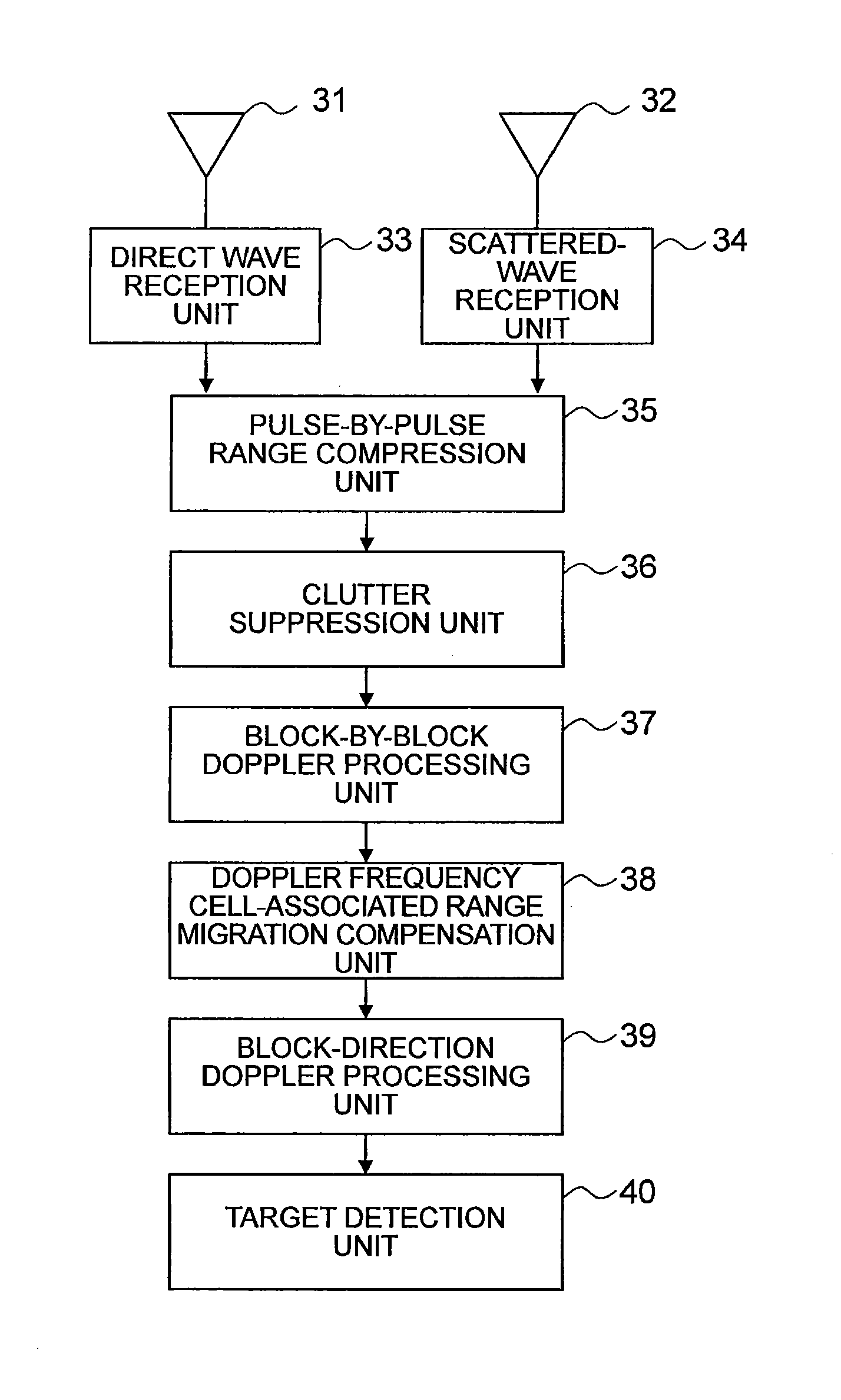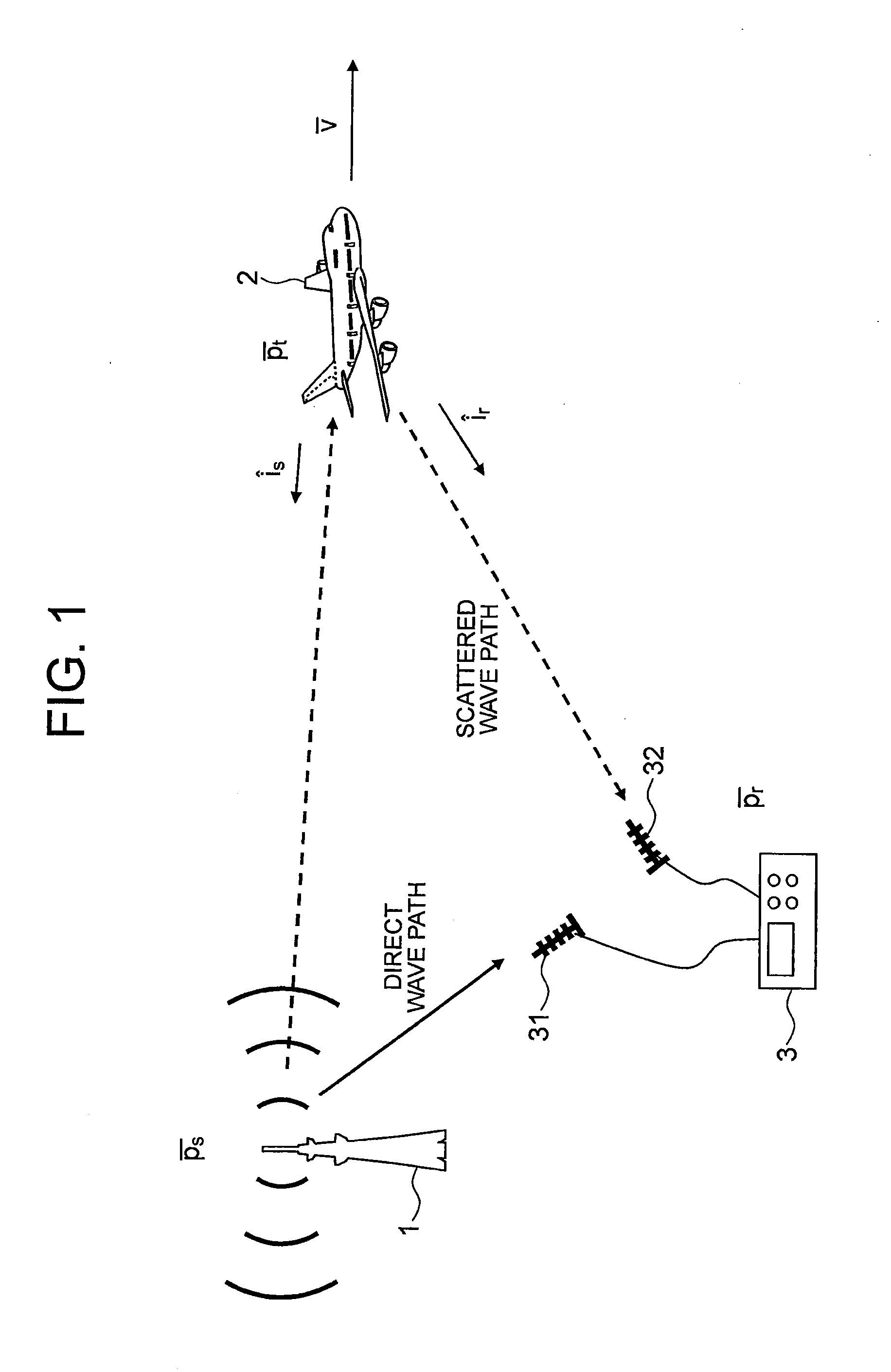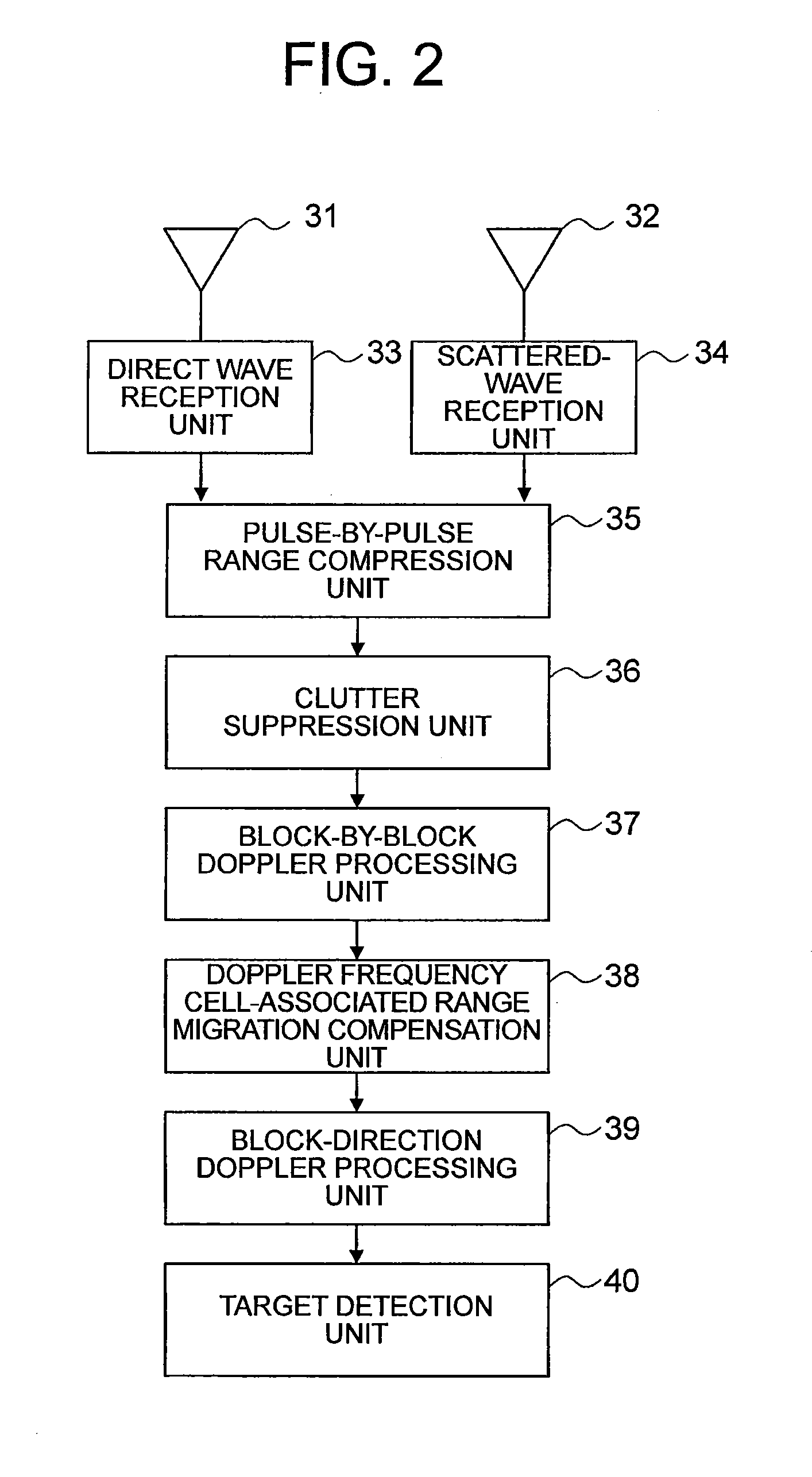Passive radar device
- Summary
- Abstract
- Description
- Claims
- Application Information
AI Technical Summary
Benefits of technology
Problems solved by technology
Method used
Image
Examples
first embodiment
[0036]FIG. 1 is an explanatory diagram illustrating a concept of a passive radar along with a geometry of observation. In FIG. 1, a radio wave transmitted from a broadcasting station 1 being a radio source is received by an antenna 31 for direct-wave reception and an antenna 32 for scattered-wave reception that are provided to a receiving station 3.
[0037]Here, the antenna 31 for direct-wave reception is disposed so as to be directed toward the broadcasting station 1, and receives a radio wave (direct wave) that directly arrives after being transmitted from the broadcasting station 1. Further, the antenna 32 for scattered-wave reception is disposed so as to be directed toward an observed area in which a target 2 exists, and receives a radio wave (scattered wave) that has been transmitted from the broadcasting station 1 and scattered by the target 2.
[0038]It is assumed that the broadcasting station 1 is continuously transmitting (broadcasting) a signal having a carrier frequency fc an...
second embodiment
[0116]FIG. 7 is a block diagram illustrating a passive radar device according to a second embodiment of the present invention. In FIG. 7, the passive radar device includes the antenna 31 for direct-wave reception, the antenna 32 for scattered-wave reception, the direct-wave reception unit 33, the scattered-wave reception unit 34, the pulse-by-pulse FFT unit 35a, the pulse-by-pulse FFT unit 35b, the complex conjugate multiplication unit 35c, the clutter suppression unit 36, the block-by-block Doppler processing unit 37, the phase function 38b for range migration compensation, the multiplication unit 38c, the IFFT unit 38d, the block-direction Doppler processing unit 39, and the target detection unit 40.
[0117]Here, the pulse-by-pulse FFT unit 35a, the pulse-by-pulse FFT unit 35b, and the complex conjugate multiplication unit 35c, and the phase function 38b for range migration compensation, the multiplication unit 38c, and the IFFT unit 38d are the same as those illustrated in FIGS. 4 ...
third embodiment
[0123]FIG. 8 is a block diagram illustrating a passive radar device according to a third embodiment of the present invention. In FIG. 8, the passive radar device further includes a block signal addition unit 41 in addition to the components of the passive radar device illustrated in FIG. 7. The other components are the same as those of the second embodiment described above, and hence descriptions thereof are omitted.
[0124]FIG. 9 is an explanatory diagram illustrating handling of a received signal in processing performed by the passive radar device according to the third embodiment of the present invention. FIG. 9 is substantially the same as FIG. 3, and hence a description is made of only different points from FIG. 3.
[0125]In FIG. 3, the blocks are set so that the adjacent blocks do not overlap each other, while in FIG. 9, the adjacent blocks overlap each other. For example, in FIG. 3, the pulses forming the second block have the pulse numbers of N to 2N−1, while in FIG. 9, the puls...
PUM
 Login to View More
Login to View More Abstract
Description
Claims
Application Information
 Login to View More
Login to View More - R&D
- Intellectual Property
- Life Sciences
- Materials
- Tech Scout
- Unparalleled Data Quality
- Higher Quality Content
- 60% Fewer Hallucinations
Browse by: Latest US Patents, China's latest patents, Technical Efficacy Thesaurus, Application Domain, Technology Topic, Popular Technical Reports.
© 2025 PatSnap. All rights reserved.Legal|Privacy policy|Modern Slavery Act Transparency Statement|Sitemap|About US| Contact US: help@patsnap.com



